How to Disable InPrivate Browsing in Microsoft Edge?
The InPrivate browsing window can be used to browse without storing data on the device. It helps in covering the evidence of browsing or search history on the user’s profile. This is available in almost all browsers and it is a pretty useful feature when needed. However, sometimes a company may have a strict online policy or you may want to track online activities on a shared PC. This is where you will need to disable the InPrivate feature in the Microsoft Edge browser. In this article, we will show you methods through which you can easily disable or enable the InPrivate browsing feature.
The Group Policy Editor is not available on Windows 10 Home Editions; therefore we have also included a registry method that works similarly.
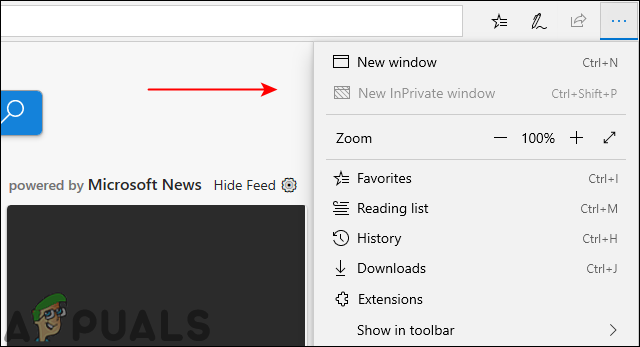
Disabling InPrivate Browsing for Legacy Microsoft Edge
The Legacy Microsoft Edge browser is the one that comes as a default browser with Windows 10. Most places still use this rather than the new one. The policy-settings also work for this without updating the Group Policy. Everything is already available in your system and you just need to configure it.
Method 1: Using the Local Group Policy Editor
The Group Policy Editor allows users to manage and configure their operating system according to their needs. It has all those options that users cannot find in the Control Panel or Settings app. Make sure you restart the application after you configure the setting for that specific application. Follow the below steps to disable the InPrivate browsing in Microsoft Edge.
This specific setting can be found in both the Computer Configuration and the User Configuration. The path to the setting will be the same, but the category will be different. You can set in the category that you want for your system.
Note: If you are using the Windows Home Edition, then skip this method and try using the registry method.
- Press the Windows + R buttons on your keyboard to open a Run dialog. Now type “gpedit.msc” and press the Enter key to open the Local Group Policy Editor.

Opening the Local Group Policy Editor - Navigate to the following setting in one of the categories:
User Configuration\ Administrative Templates\ Windows Components\ Microsoft Edge\
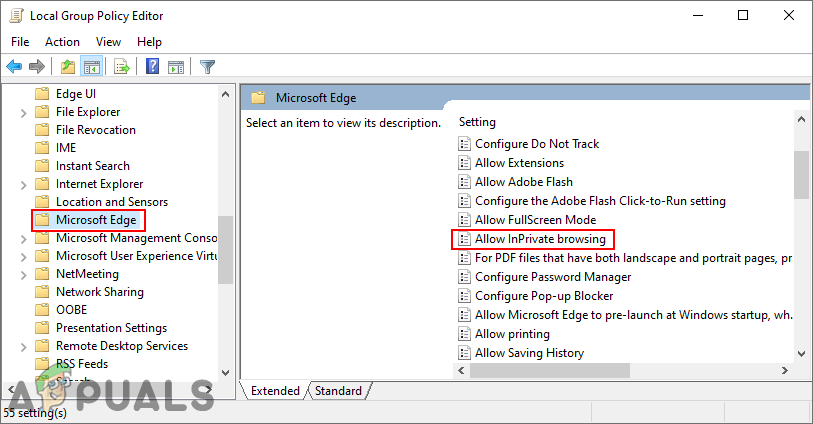
Navigating to the setting - Open the setting named “Allow InPrivate browsing” by double-clicking on it. This will open in another window, now change the toggle option to Disabled.
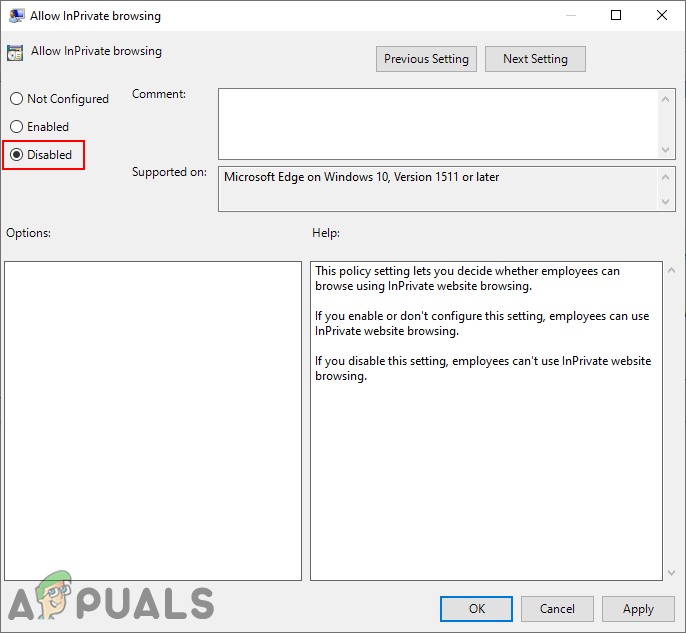
Disabling the setting - Click on the Apply/Ok button to save the changes. This will disable the InPrivate browsing feature in Microsoft Edge.
- You can enable it back by changing the toggle option back to Not Configured or Enabled.
Method 2: Using the Registry Editor
The other method for disabling the InPrivate browsing is by modifying these settings through the Registry Editor. This method will require a few technical steps, but it won’t be a problem as most of the users are familiar with the Registry Editor. The user will have to create the missing key or value manually in the Registry. Follow the below steps to disable the InPrivate browsing in the Registry:
This setting can be applied in both the Current Machine and the Current User hives. The path will be the same for both, but the hive will be different. You can choose the hive that you want for your system.
Note: We always recommend users to create a backup of their Registry before making any new changes.
- Open the Run dialog box by pressing the Windows and R keys on your keyboard. Then, type “regedit” in it and press the Enter key to open the Registry Editor. Also, if prompted by UAC (User Account Control) dialog box, then choose the Yes option.

Opening the Registry Editor - Navigate to the following key in one of the hives:
HKEY_CURRENT_USER\Software\Policies\Microsoft\MicrosoftEdge\Main
- Right-click on the right pane and choose the New > DWORD (32-bit) Value option. Name this value as “AllowInPrivate“.
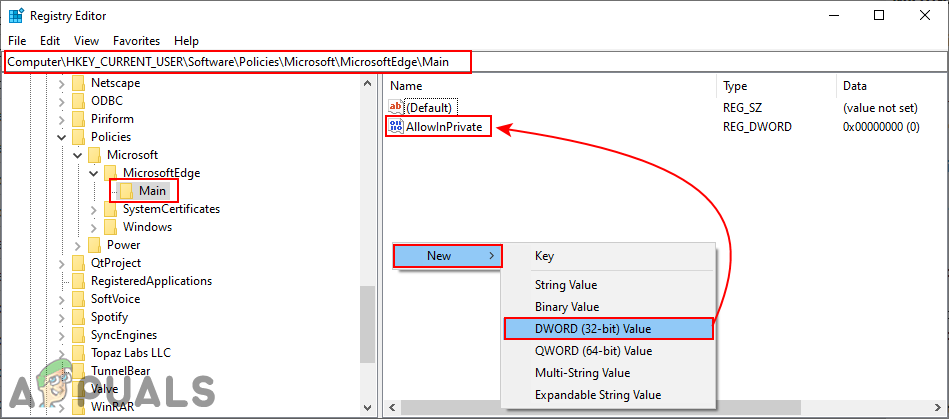
Creating a new value in the Registry Editor - Open the value by double-clicking on it and change the value data to 0.
Note: Value data 0 will disable the value and value data 1 will enable the value.
Disabling the value - After all the configurations, you will need to restart your system to apply these changes to Microsoft Edge.
- You can always enable the InPrivate browsing feature back by changing the value data to 1 or removing the value from the Registry.
Disabling InPrivate Browsing for New Microsoft Edge
The latest Microsoft Edge browser will require different settings than the Legacy version. Both the Registry Editor and Group Policy Editor method will be different. The Group Policy Editor setting isn’t available for this version, so you have to download it from the Microsoft site.
Method 1: Using the Registry Editor
You can always use the Registry Editor for the settings of the new applications that aren’t available in the Group Policy. You just need to know the key path and the value name/data for that specific setting. By following the below steps, you can disable the InPrivate browsing for the new Microsoft Edge chromium:
- Press the Windows and R keys on your keyboard to open Run. Then type “regedit” and press the Enter key to open the Registry Editor. If prompted by User Account Control (UAC), then click on the Yes button.

Opening the Registry Editor - Navigate to the following key in the Registry Editor window:
HKEY_LOCAL_MACHINE\SOFTWARE\Policies\Microsoft\Edge
- Create the Edge key by right-clicking on the Microsoft key and choosing the New > Key option. Rename the key as “Edge“.
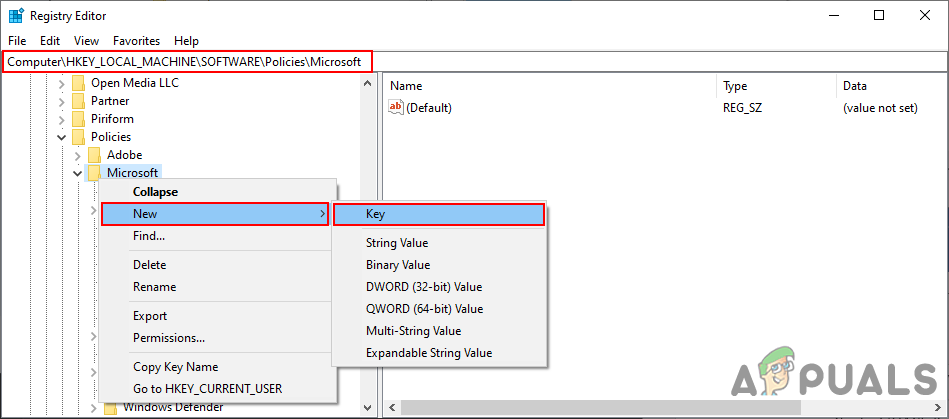
Creating a new key - Right-click on the right pane in the Edge key and choose the New > DWORD (32-bit) Value option. Rename this value as “InPrivateModeAvailability“.
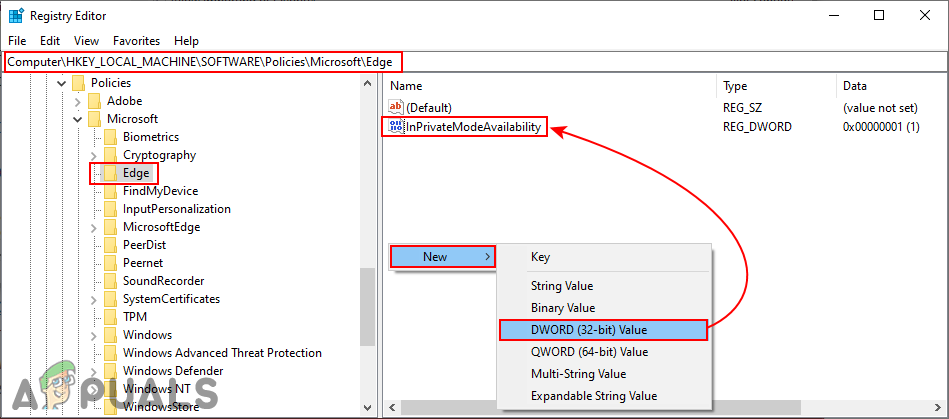
Creating a new value - Now open the value by double-clicking on it and change the value data to 1.

Changing value data - Once all the configurations are made, you have to restart the computer to apply the changes. This will disable the InPrivate browsing in the new Microsoft Edge browser.
- You can always enable it back by removing this value from the Registry Editor.
Method 2: Using the Group Policy Editor
Unlike the Group Policy method for the legacy version, this one will require new policy files for the new Microsoft Edge. The default policy settings will not work for the new Edge browser. It is easier to configure settings in Group Policy, but this one requires a few extra steps than the Registry Editor method.
- First of all, you have to download the Policy files from the Microsoft site. You must choose the version, build, and platform of your Microsoft Edge and then click on the GET POLICY FILES.
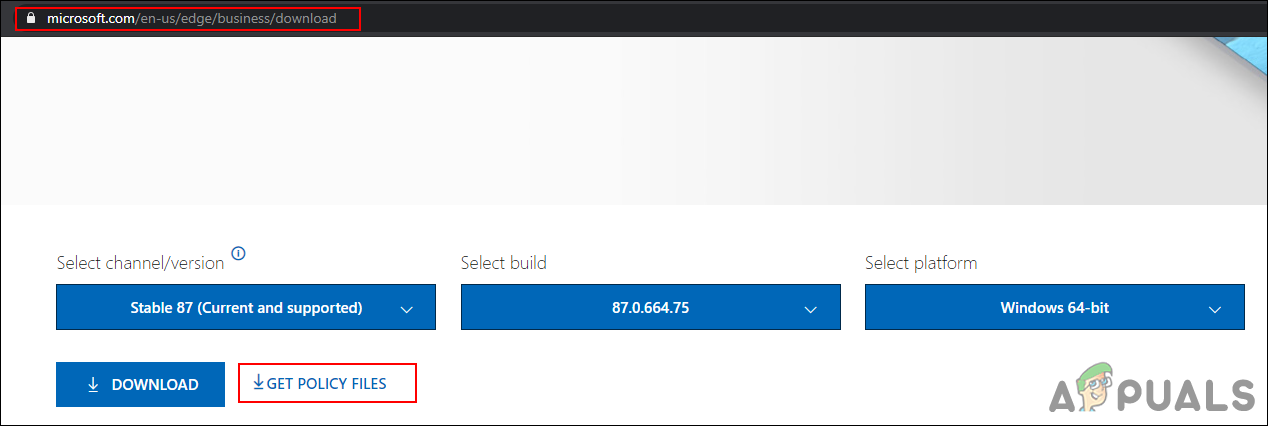
Downloading policy files - Extract the downloaded files by using the WinRAR application as shown in the screenshot:

Extracting downloaded files - Open the folder and navigate to the “MicrosoftEdgePolicyTemplates\windows\admx” path.
- Now copy the “msedge.admx” and “msedge.adml” files and paste them into the “C:\Windows\PolicyDefinitions“.
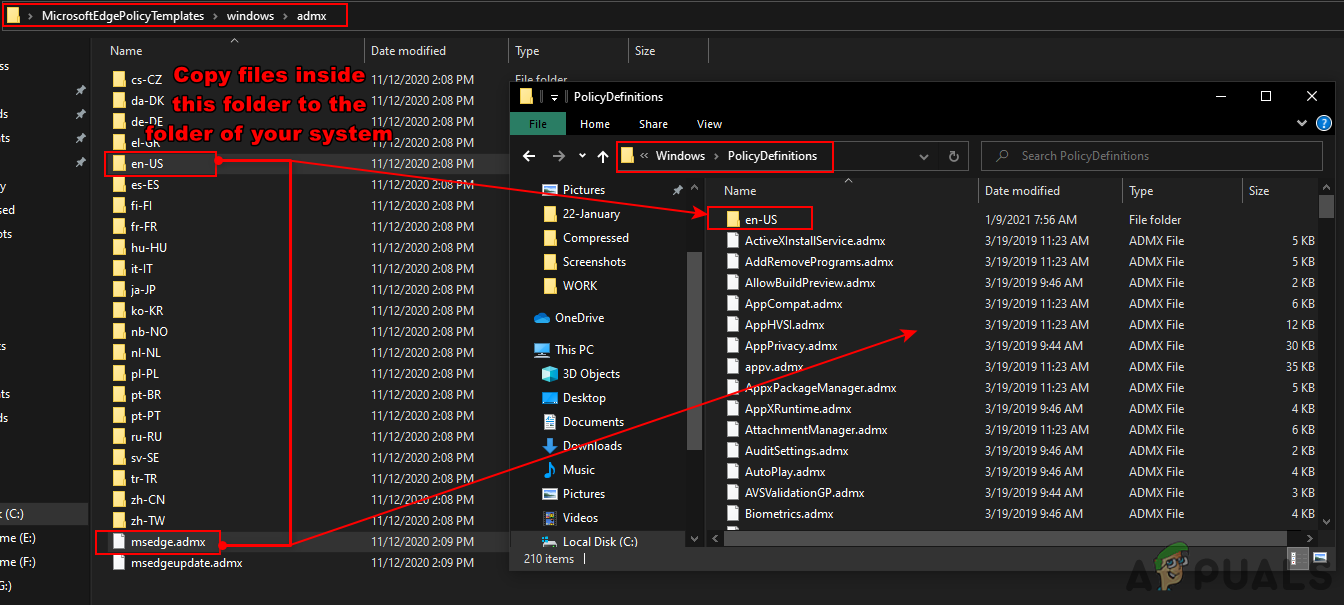
Moving files to system policy folder Note: The language file is inside the folder and should be copied in the folder.
- Restart your system to apply these new changes in your system.
- Press the Windows and R keys on your keyboard to open a Run dialog. Now type “gpedit.msc” and press the Enter key to open the Local Group Policy Editor.

Opening the Registry Editor - Navigate to the following setting in the Local Group Policy Editor window:
Computer Configuration\ Administrative Templates\ Microsoft Edge
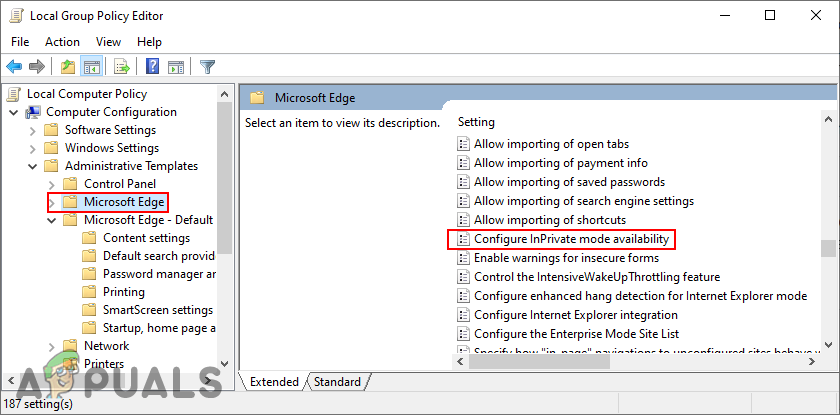
Navigating to the setting - Double-click on the setting named “Configure InPrivate mode availability” and it will open in another window. Now change the toggle option to Enabled and choose the “InPrivate mode disabled” option in the dropbox menu.
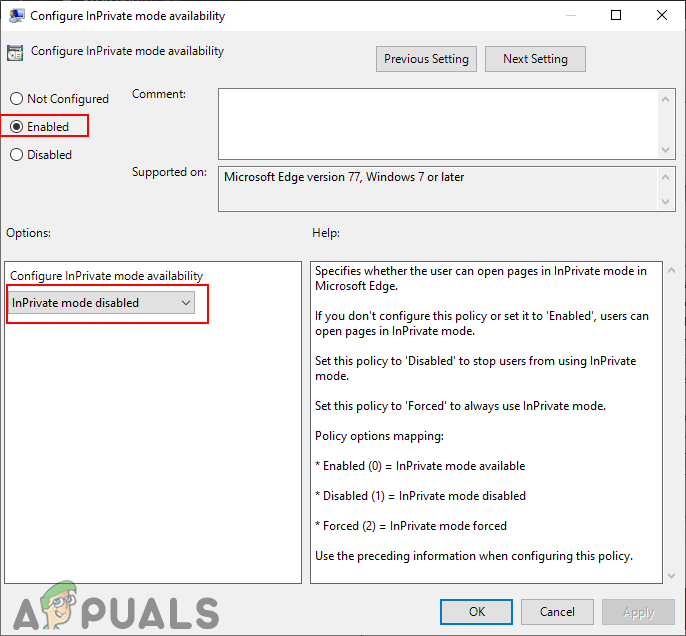
Enabling the setting - Click on the Apply/Ok button to save these changes. This will disable the InPrivate browsing for the new Microsoft Edge browser.
- You can always enable it back by changing the toggle option to Not Configured in step 8.





